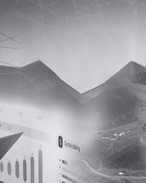The robot drills do not have the sexiness or sheer size of the autonomous trucks or driverless trains programs. Nor do they have the high tech smarts of the ore sorting program, where individual rocks are accepted or rejected based on x-ray scans.
However, drilling and blasting is an area where a miner can get - pardon the pun - one of the biggest bangs for its buck. Get the blast right and everything falls into place.
What these robot drills have proved to do for Rio Tinto is not only get people out of dangerous mining areas but also to drill more accurately than any human operator.
In Western Australia's Pilbara region, where these drills operate, Rio Tinto will be drilling 1 million blast holes. Were these all done by Rio's robot drills - mostly Atlas Copco blast hole drills with some Terex machines mixed in - they would all be done to the letter of the blast plan.
Another benefit these drills bring is the ability to analyse the material coming out of the drill hole in real time.
At the moment that information is largely drawn from mechanical sensing such as the penetration force required - this can actually speak volumes about what the drill is cutting.
Rio Tinto is, however, on the cusp of fielding a cabless drill. Where the operator would sit will instead be an assay laboratory allowing for real-time analysis of the rock chips.
At the moment cone samples are taken from each drill hole. The trouble is, with the pace Rio Tinto's iron ore operations are moving at, by the time the sample is analysed and the results returned, the material is on a ship to China. At best it provides a historical reconciliation to the mining plan.
With the on-drill assay lab mine managers will be able to adjust their plans in real time to suit the material they are about to blast.
It also offers real opportunities to optimise the blasting.
The drills can be operated from a control room on the mine site or, as Rio Tinto demonstrated, from a control room about 1000 miles away from the site.
What is more, one operator can successfully supervise several of these machines at the same time.
The robot drilling equipment MiningNews.net witnessed in action on Rio Tinto's West Angelas plant is technology the major miner has developed itself.
Rio Tinto surface automation program head Andy Stokes said as far as he was aware no other company had the capability to do what Rio Tinto was doing with in the field of autonomous drilling.
That may be so. However, it does give an insight into what is possible.
METS
Robot drills roaming
ONE of the unsung heroes of Rio Tinto's Mine of the Future project is the robot drill program. Th...

Mining Company ESG Index: Benchmarking the Future of Sustainable Mining
The Mining Company ESG Index report provides an in-depth evaluation of ESG performance of 61 of the world's largest mining companies. Using a robust framework, it assesses each company across 9 meticulously weighted indicators within 6 essential pillars.

Mining Journal Intelligence Global Leadership Report 2024: Net Zero
Gain insights into decarbonisation trends and strategies from interviews with 20+ top mining executives and experts plus an industrywide survey.

Mining Journal Intelligence Project Pipeline Handbook 2024
View our 50 top mining projects, handpicked using a unique, objective selection process from a database of 450+ global assets.

MiningNews.net Research Report 2024
Access a multi-pronged tool to identify critical risks and opportunities in Australia’s mining industry.





















